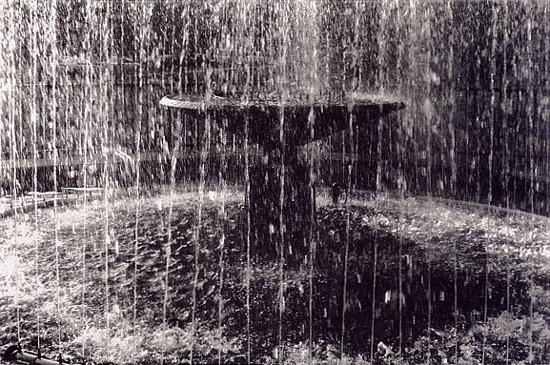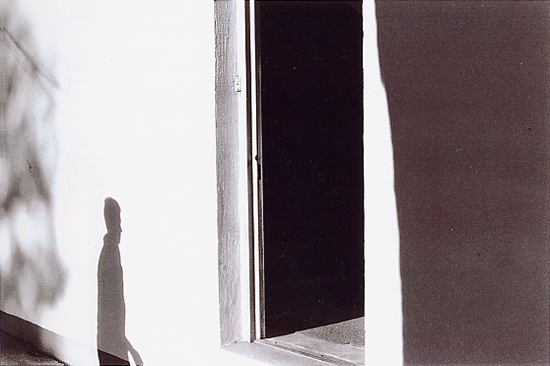Visuals
© John Fraser
Prefatory
I
In 1998, in a valedictory spirit, I went through my black-and-white photos, picked twenty-five of them, and had them printed in a book of my designing called Testament. Roxanne Smith, herself a photographer, did the photocopying with me at Carsand-Mosher Photographic. Wayne Dickson printed the textual parts at Kinko’s Copy Centre. Twenty-five numbered copies were made. I gave most of them away to friends.
Later that year, and on into 1999, I officially registered myself as Throwaway Books, and did twenty more little books using the same basic design, this time having everything handled at Kinko’s—the textual parts by Wayne, the images by Karen Vincent. The Xerox machine was set for automatic colour copying, which produced the clearest images with the fewest difficulties and resulted in some interesting aleatory toning. Ten copies was the normal printing. I gave a lot of those copies away too.
What you have here is a selection of a hundred and seven images from the Throwaways. One book, Sun, is reproduced almost in its entirety. Images of Carol Hoorn Fraser from the Throwaway Artist can be found in the other half of this site (see home-page button on left).
Images on a sequence of print pages and on a single computer page can look different. I have done some editing.
II
In the notes to Testament, I said:
I started doing photography seriously in 1956, kept at it for a dozen years or so, and returned to it in 1995. I am grateful for the encouragement, sometimes brief, sometimes extensive, some of it years ago, of a number of people, among them Carol Lind Geary, Allen Downs, Jerry Liebling, Jim Clark, Joselyn Grassby, Findlay Muir, Richard Robertson, Ian Colford, Collette Saunders, Dan O’Brien, George Georgakakos, and Rob and Joyce Stevenson.
Three debts so particularly deep: to Carol Hoorn Fraser, whose informed and generous eye was always there in the old days for the darkroom harvest; to Robert Eugene Wilcox, an exemplar of photographic integrity, who conveyed so much, so gently, in so few words; and to David McGimpsey, without whose enthusiasm a lot of images might not exist at all.
The following remarks are taken from my introduction to a few of my images that were reproduced in Ian Colford’s Pottersfield Portfolio in 1998.
Things Past
This selection, my first ever, was put together by the editors from among several hundred photos. Over the years I've taken maybe fourteen thousand, the vast majority black-and-white, without tripod, flash, cropping, wide-angle or telephoto lenses, or high-contrast printing.
When I started, the classic Leica was the most beautiful camera in the world for me, and Henri Cartier-Bresson was my idol. I was relieved when I learned that he would shoot hundreds of pictures in a day. I'd assumed that those unforgettable images in The Europeans presented themselves to him like game whirring up with every step of the hunter.
“Snap shot--1. a hurried shot fired with little or no aim; quick, offhand shot” Of course you may miss. I've taken acres of boring pictures. But without that split-second seizing of the moment, you won't get the one in twenty (if you're lucky) that makes it all worthwhile. And you have to be ready. Until those tiny rectangles are enlarged you won't know the exact expression on a face. A configuration had flickered before you, saying, “Take me!” Zen time.
Photos are prints, not windows; compositions in black and grey. And, like haiku, needing to be shared, co-creatively. Images can be near-identical, form and content sibling rivals, printing decisions multiple. Over the years, a long filtering. Some pictures stay alive and unimprovable, others fade, others again (re-viewed later) speak to you as they never did at the time.
Encounters, relationships, sometimes close to the horns. The photographer here, now, always, at this instant, tripping a shutter. Cartier-Bresson, Riis, Evans, Brassaï, Lange, Weegee, Klein, Frank, Arbus, others, others. A major tradition. Indispensable.
Of course you have to be a bit crazy--obsessed with seeing, discovering, uncovering, horrified by the thought of losing the unique moment from timidity or fumbling. Terminal scopophilia! And when the sun comes out, where else do you head but to the darkroom, where the light you left behind gets hyper-distilled under the enlarger?
Camera obscura: “a dark chamber with a lens or opening through which an image is projected onto an opposite surface.” The primal thrill—being inside, in the dark, looking at the outside world miniaturized and silent on a table around which you're standing with others.
III
I began in 1956 with Carol’s Argus C-3, graduated the following year to a used Leica IIIC with the classic 50mm f3.5 Elmar lens, and traded that in in 1961 for a IIIG with a 50mm f2 Summitar lens. When I returned to photography in 1995, it was with a Canon EOS Rebel with the Canon EF 50mm f1.8 lens, a lovely camera. My basic film in the Fifties and Sixties was Kodak Plus-X, in the Nineties the much improved Tri-X. I did my own printing.
The covers of the Throwaways, a light-weight card stock, were 8 1/2" x 9", the interior pages a quarter-inch narrower, the spiral binding white plastic. In most of them I used pages with Roman numerals as dividers. I’ve omitted the three in the one that’s reproduced here.
Most contained between six and nine images.
I scanned the books, rather than my original prints, because I like the warmer tones. Rob Stevenson did the coding. To him, as always, my thanks.
All rights reserved in all media. For permission to reproduce any of the images in Moments, apply to the Site Secretary.
2004–06
© John Fraser


